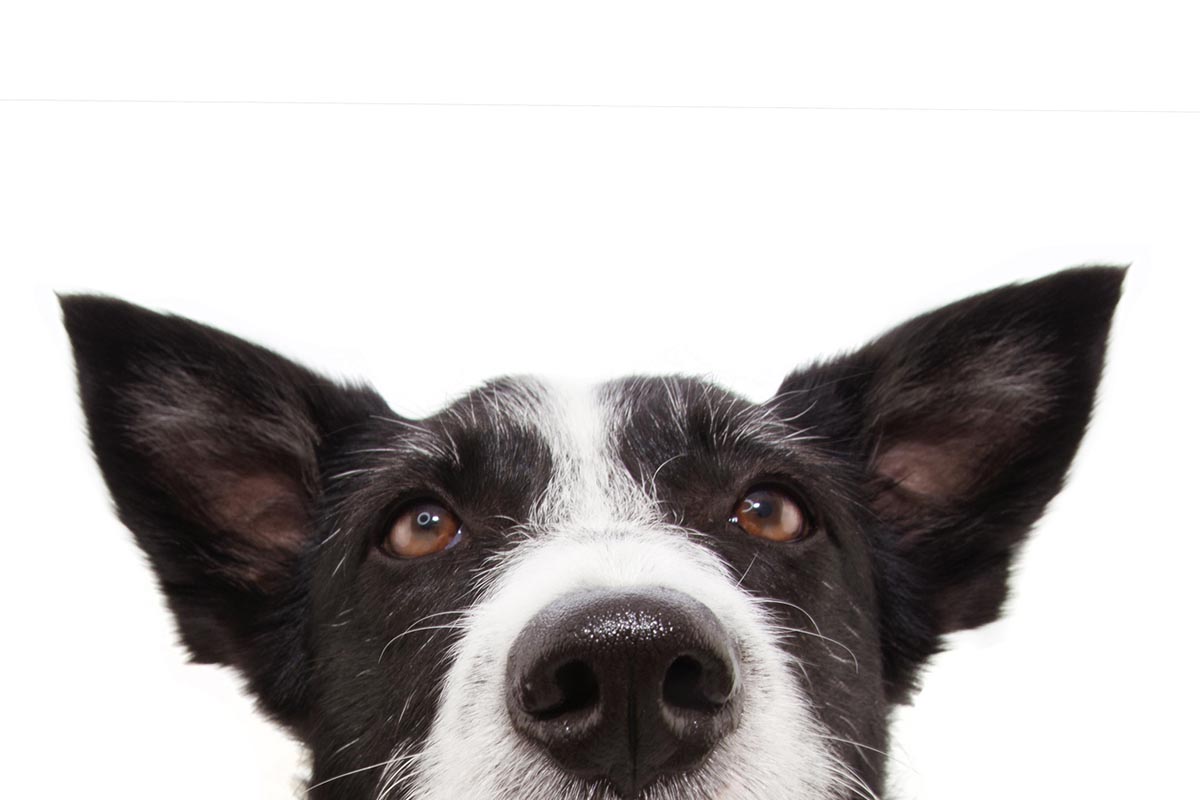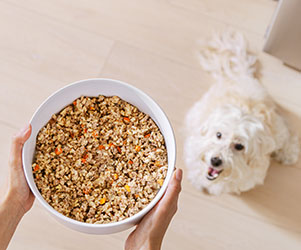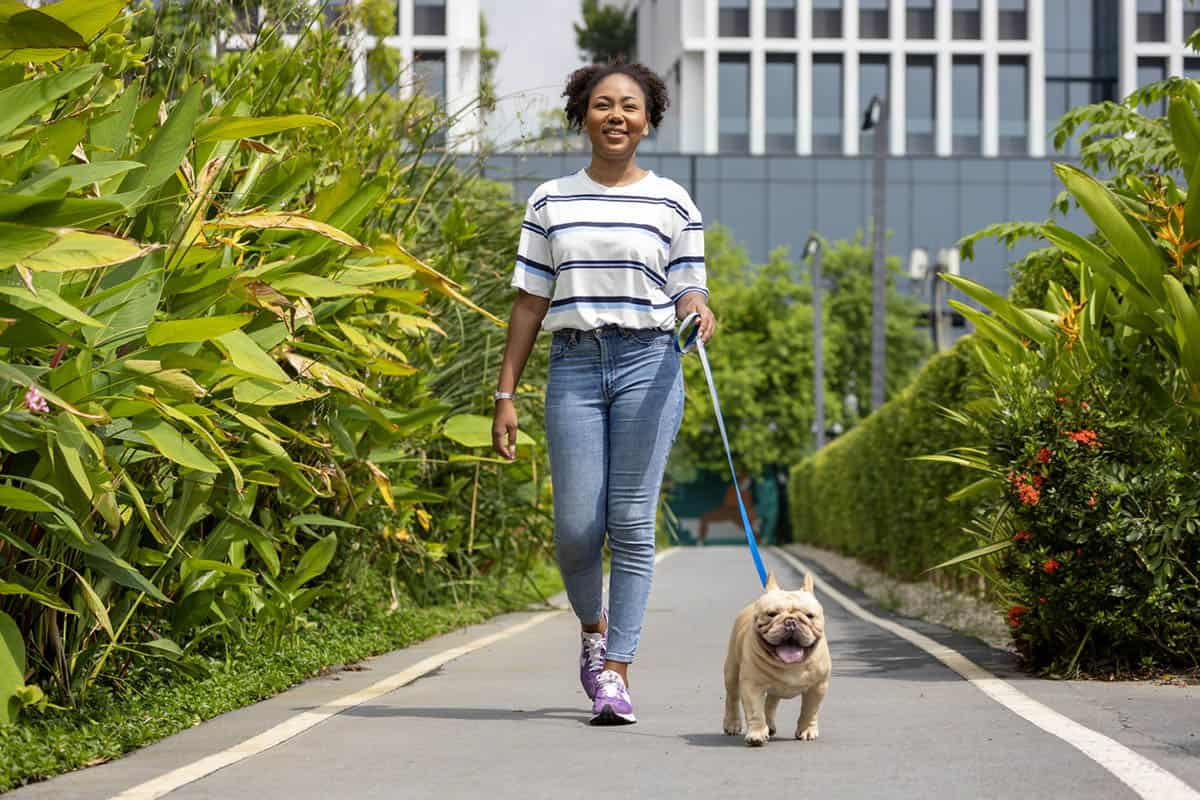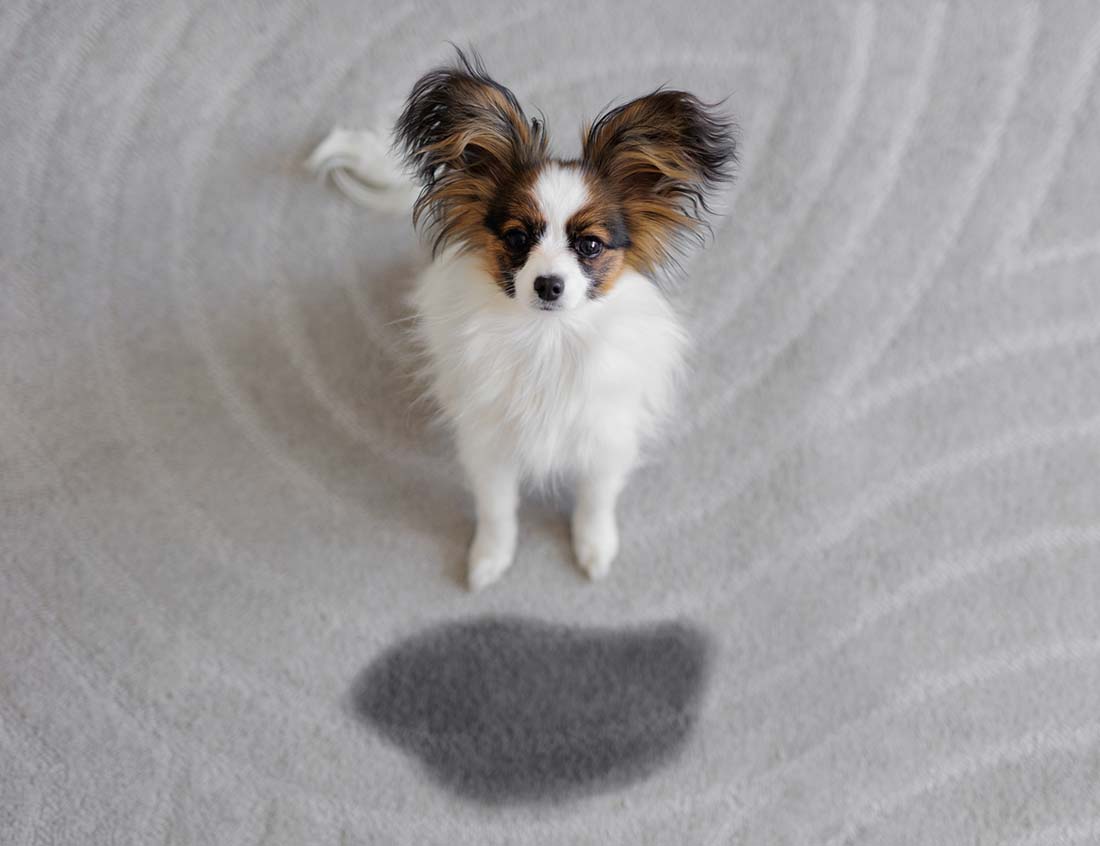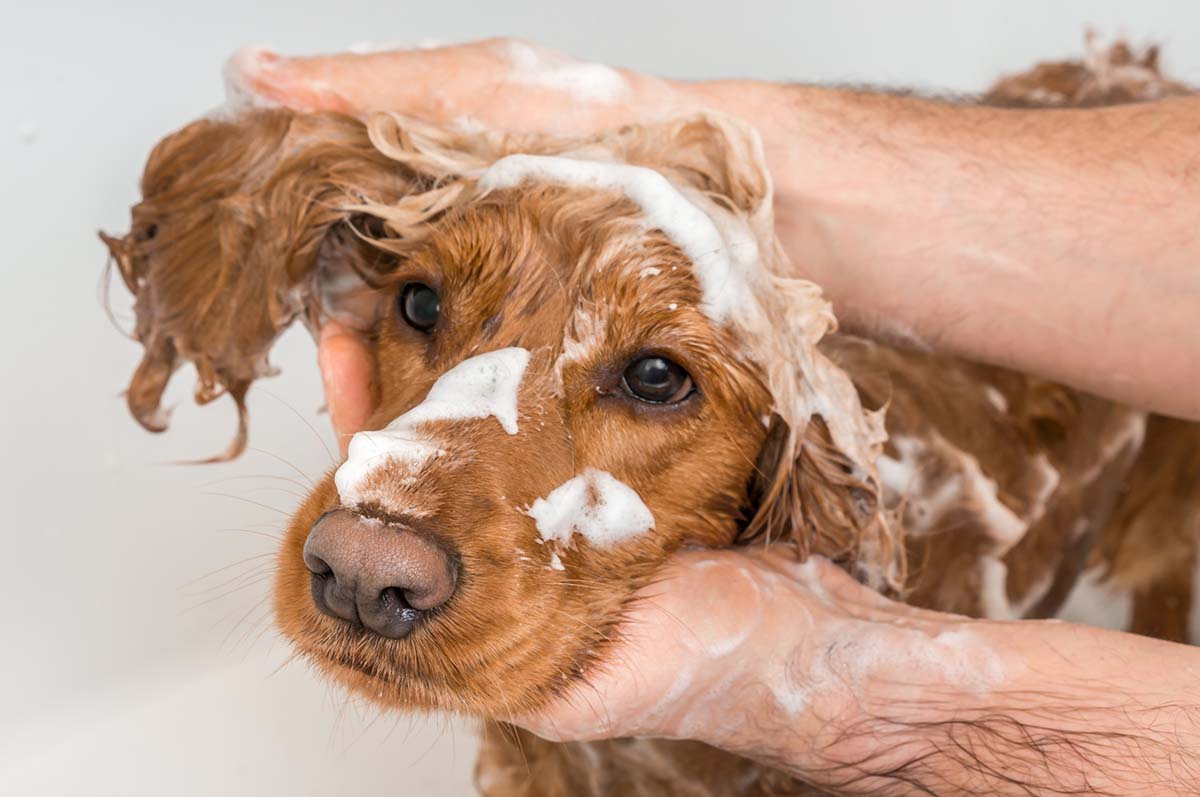How to Perform the Dog Heimlich Maneuver
Knowing how to do the dog heimlich maneuver should be in every pet parent's arsenal.
Many dogs have an “eat first, ask questions” later mindset. Food, crumpled paper, and stray chicken bones on the street are all worth a taste in a dog’s mind. This sniff, snuffle, and gobble approach to foreign objects can lead to choking.
Research shows veterinarians see 200,000 pets a year due to choking incidents. There’s even a National Pet Choking Prevention Day to educate pet parents about the dangers and bring awareness to the hazards of foreign objects.
Not all of these dogs will need the Heimlich maneuver. However, it’s a good idea to know the signs of choking in your pooch. It’s another tool in your first aid kit.
First, how do you tell the difference between a mild gagging reflex that’ll pass in a few seconds vs. an emergency?
To find out, we talked with Torina Yamada and Anndrea Gutierrez of Balanced Dog, a dog grooming salon in Los Angeles. As part of their training, they studied dog CPR and first aid and shared their experience.
How Do You Know If Your Dog Is Choking?
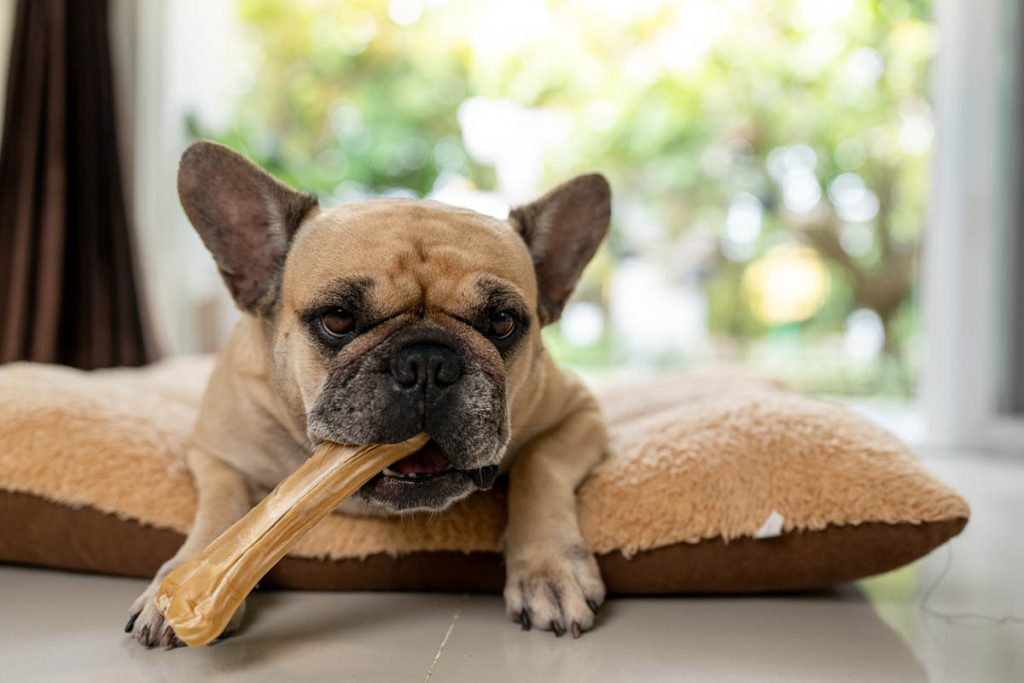
As a concerned pet parent, you won’t jump into emergency mode whenever your dog coughs or has a mild gag reflex. That’s not practical or necessary.
However, if you know your dog just inhaled a foreign object or large piece of food and starts coughing and gagging, you pay attention.
The typical signs of choking are:
- Coughing/gagging for more than a couple of seconds
- Pawing at their mouth
- Acting distressed
- Stumbling
- Showing whites of eyes
- Retching (or attempts to vomit)
If your dog has an obstructed airway, you need to clear it asap. Yamada and Gutierrez recommend looking in your dog’s mouth to see if you can see anything. If you can see a piece of food or a foreign object in your dog’s mouth and it’s safe, you can use a finger or the palm of your hand to sweep side-to-side to see if you can dislodge it.
Sometimes, that’s enough to shift it so your dog can spit it out.
Whatever you do, do not try to push it down your dog’s throat, as that could make things worse.
If the sweeping motion doesn’t dislodge it, Yamada and Gutierrez suggest grabbing the dog’s back feet and pulling up like a wheelbarrow. Then, pat the dog behind the shoulder blades while in this wheelbarrow position. This position can help your dog cough up the item and unblock the windpipe.
If that doesn’t work, you’ll need to perform the Heimlich Maneuver. Whether or not you ever took a CPR class, you probably understand the rudiments of the Heimlich. You essentially press on the ribcage to dislodge the foreign object.
Here are more details. Hopefully, you will never need to use it.
The Heimlich Maneuver for Large Dogs

If your dog is standing, you can raise your dog on his hind legs so you’re standing behind him and support him with your body. Then, make a fist near your dog’s abdomen and make five short, sharp upward movements against the ribcage to try and dislodge the bit of rawhide or whatever else is blocking your dog’s airway.
If your dog is lying down, crouch beside them, and with one hand on your dog’s back, use the other near your dog’s abdomen to make a series of quick, upward thrusting motions.
The Heimlich Maneuver for Small Dogs
Pull your smaller dog onto your lap, facing you. With one hand on their back, use your other hand to make sharp pushes against your dog’s abdomen.
Hopefully, this will dislodge the foreign object, and you can quickly get it out of your dog’s sight so they don’t try to eat it again. Because we all know some dogs will.
Common Things Dogs Choke On
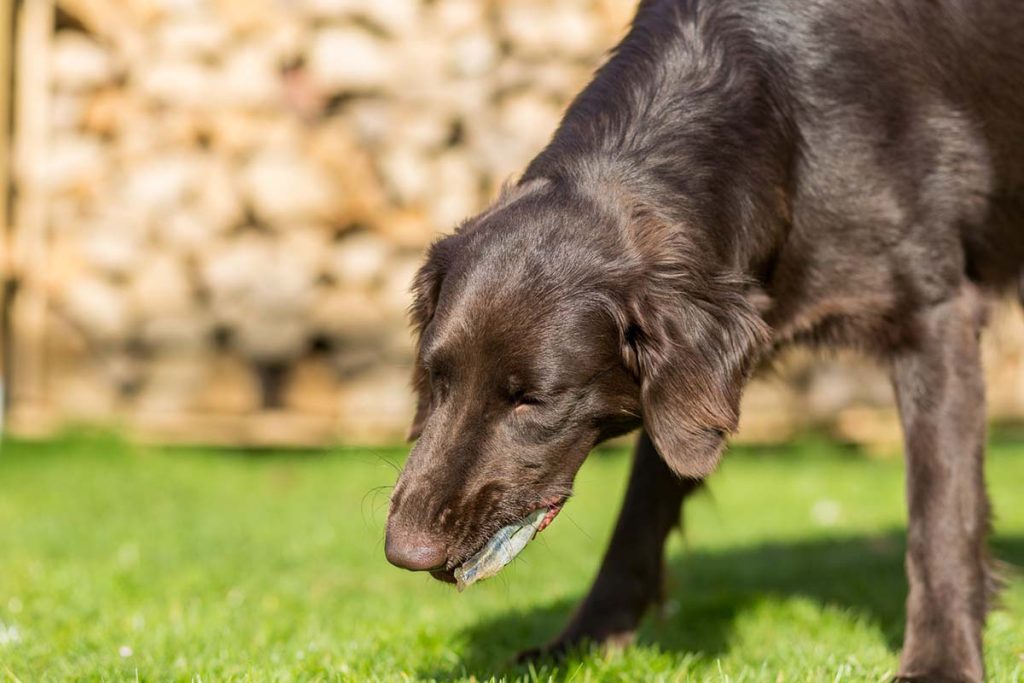
Anything can become a potential choking hazard because dogs explore the world through their nose and mouths. If something smells interesting, they’ll probably take an exploratory lick. If you panic and try to grab it away from them, they may gobble it down in an effort to keep it away from you.
Pups can choke on plastic bags, baby toys, food like carrot sticks, and anything else your dog can access. However, the National Prevention for Pet Choking reports these are the most common choking hazards.
- Balls
- Sticks
- Chew toys
- Bully sticks
- Food packaging and trash
So, if you have an overzealous vacuum cleaner disguised as a dog, be vigilant. Keep your trash can covered, make sure enticing food packaging is kept out of your dog’s reach, feed your dog food they can easily chew, and supervise your dog’s play.
Pay attention to potential choking hazards like children’s toys, other dog toys, and even other pet toys, and keep them out of your dog’s reach if you’re not around.
If you have a chewer, they’ll likely grow out of it eventually, but until then, everything can be a choking hazard. You’ll need to supervise their play, and knowing a little first aid is a good idea. Don’t forget to have the emergency vet phone number handy.
How to Care for Your Dog After a Choking Incident
You’re probably both shaken after a bad choking incident. Take a few breaths, calm your nerves, and call your veterinarian or local animal hospital.
Depending on the type of foreign object your dog tried to swallow, they might have damage to the throat, esophagus, or airway. Common choking injuries include bruising or even lacerations in the mouth or windpipe.
After a choking incident, take your dog to the animal hospital, where your veterinarian can assess your pup and treat for any internal damage.
How Long Does It Take Your Dog To Recover From Choking?
There’s no one answer because it depends on your dog and the seriousness of the incident. Some dogs may have trouble eating for a few days while their mouth and throat heal. If so, wet food can be a good solution.
Final Wrap Up
Dog choking is common, but it doesn’t have to be.
You know your dog best. Take precautions if you think your dog will try to swallow anything within sight. Pick up toys, keep the trash can covered, and monitor your dog’s access to dog chews or even large kibble.
You can also prepare yourself with some basic first aid supplies and knowledge, such as how to perform the Heimlich maneuver for dogs and have your emergency vet information saved so you can find it in a hurry.
This content is for informational use only and does not replace professional nutrition and/or medical advice, diagnosis, or treatment. It is not a substitute for and should not be relied upon for specific nutrition and/or medical recommendations. Please talk with your veterinarian about any questions or concerns.
“Choking Dog | What to Do! | First Aid for Pets.” n.d. https://firstaidforpets.net/choking-dog-help/.
